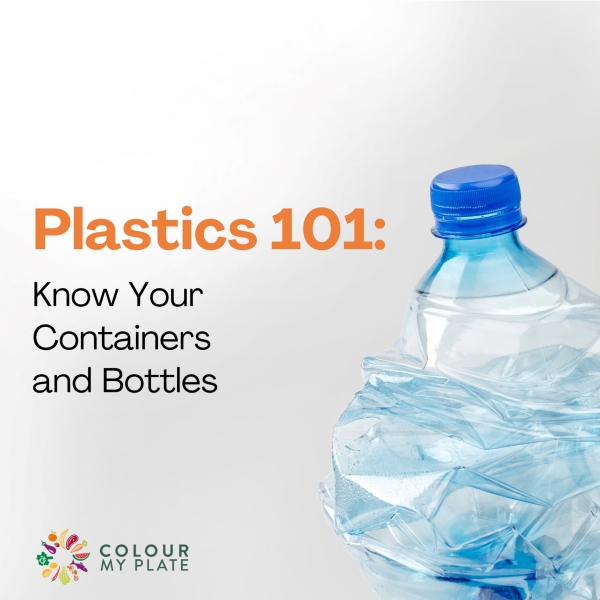Plastics are everywhere in our modern world; from the containers we store our food into the bottles we drink water from. In this blog post, we’ll delve into the realm of plastics, revealing how not all are created equal and how understanding their differences can guide us toward healthier choices for ourselves and the planet.
Types of Plastics
Plastics are categorized by numbers known as resin identification codes which are usually found on the bottom of containers. Here are some common types:
- PET (Polyethylene Terephthalate): PET is commonly used for water and soda bottles. It’s generally considered safe for single-use applications but may leach chemicals if reused or exposed to high temperatures.
- HDPE (High-Density Polyethylene): HDPE is used in milk jugs, detergent bottles, and some food containers. It’s considered safe and is widely recyclable.
- PVC (Polyvinyl Chloride): PVC is used in pipes, shower curtains, and cling wraps. It contains chemicals like phthalates and may release harmful substances, making it less desirable for food storage.
- LDPE (Low-Density Polyethylene): LDPE is used in plastic bags, squeezable bottles, and some food wraps. It’s generally considered safe, though it may not be as easily recyclable as other plastics.
- PP (Polypropylene): PP is found in yogurt containers, syrup bottles, and some takeout containers. It’s heat-resistant and considered safe for food storage.
- PS (Polystyrene): PS is used in foam packaging and disposable cups and plates. It can leach styrene, a potential carcinogen, especially when in contact with hot foods or liquids.
Health and Environmental Considerations
When it comes to choosing for food and beverage storage, it’s essential to prioritize safety and sustainability:
- Safety: opt for plastics labeled as “food-safe” or those designated with recycling codes #1, #2, #4, or #5. Moreover, avoid microwaving food in plastic containers unless they’re specifically marked as microwave safe.
- Sustainability: Look for alternatives to single-use plastics whenever possible. Consider using reusable containers made from glass, stainless steel, or silicone. Additionally, choose products packaged in recyclable materials and support businesses that prioritize eco-friendly packaging solutions.
Biodegradable Plastics
Biodegradable plastics are designed to break down more quickly than traditional plastics, potentially reducing environmental pollution. However, not all biodegradable plastics are created equal as well, and some may still leave behind harmful residues or require specific conditions to decompose properly.
When considering biodegradable options, look for certifications like the Biodegradable Products Institute (BPI) certification, which ensures that the product meets specific standards for biodegradability and compostability.
To conclude, understanding the different types of plastics, their safety considerations, and their environmental impact is crucial for making informed choices in our daily lives. By significantly prioritizing safety, sustainability, and responsible disposal practices, we can minimize our reliance on plastics and contribute to a healthier planet for future generations.

![]() 19 Apr 2024
19 Apr 2024
